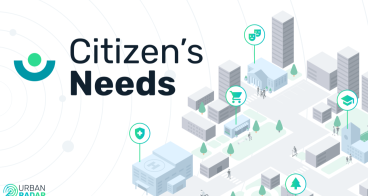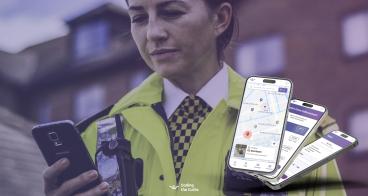Data and technology: The challenge of combining big data and people’s needs
As cities continue to grow and evolve, the use of data and technology has become increasingly important in managing their daily operations. From traffic management to public safety, data has the potential to make our cities more efficient and liveable. However, relying too heavily on data can have negative consequences, as we have seen in the case of Boston’s StreetBumpapp.
In 2012, Boston debuted StreetBump, a smartphone app that used an iPhone's accelerometer to detect potholes. The idea behind the app was that citizens would download it and, as they drove around the city, their phones would automatically notify City Hall when the road surface needed repair. The app was intended to make it unnecessary for city workers to patrol the streets looking for potholes.
What seemed to be a great collaboration between citizens and public authorities, and should have focused maintenance efforts on streets with higher needs, turned out to be misleading. The app only produced a map of potholes in affluent areas where more people owned iPhones and were aware of the app. As a result, the project was cancelled. In other words, the StreetBump did a good job of detecting potholes, but the app “was looking” for them only in young and affluent neighbourhoods. It may have led to negligence and degradation of poorer neighbourhoods, where people couldn’t afford an iPhone. Is it a reason to also suffer from worse roads?
Now, don't get me wrong, data and technology can be incredibly valuable tools for managing our cities. But data is only as good as the information it is based on, and relying too heavily on it can lead to flawed decisions that have serious consequences. In the case of Boston's Presidio StreetBump app, the decision-makers failed to take into account the larger context of the city's residents’ lives, leading to an unfair distribution of services.
Another challenge of heavily relying on data is that it cannot capture the full complexity of human behaviour and experience. A city is not just a collection of data points, but a living, breathing ecosystem made up of people and their interactions with each other and the environment. In order to truly enhance the liveability of our cities, we must consider the broader context of human well-being and connection, not just focus on technical solutions. A city is a vibrant community of individuals with unique experiences and needs.
A better example of the usage of big data to improve quality of life is the Quantifying Urban Greenness project which was carried out in 2020 in Rotterdam. We all know that greenery is important to cities, but its distribution is not even among streets and neighbourhoods. By using open-source satellite imagery of the Netherlands, we’ve been able to map the quantity of urban greenness over the largest seven cities to facilitate taking targeted decisions. You can download the full project report in the download section below.
What can we learn from these experiences? The value and importance of data largely depends on the completeness and quality of available datasets. Let's not forget that a city is more than just a collection of numbers – it's a vibrant community of individuals with unique experiences and needs. Only by considering this broader context can we truly make our cities better places to live. Focusing first on residents' needs, and only then developing the tools to accommodate them, will help prioritizing human well-being and urban nature alongside technical solutions in smart cities.
Urban planning requires a multi-dimensional perspective. With complete datasets, data-driven decisions can help create a more liveable and sustainable city.
Lior Steinberg is an urban planner and co-founder of Humankind, a multidisciplinary collective accelerating the transition towards urban happiness for all. He helps cities to look beyond functionality and to plan urban spaces that make people smile. All the projects Lior participates in have one thing in common: they create people-oriented cities. Being a Jane Jacobs’ enthusiast and a fan of great public spaces, he is keen on making cities better with an emphasis on local, innovative interventions and on including residents in urban planning.






